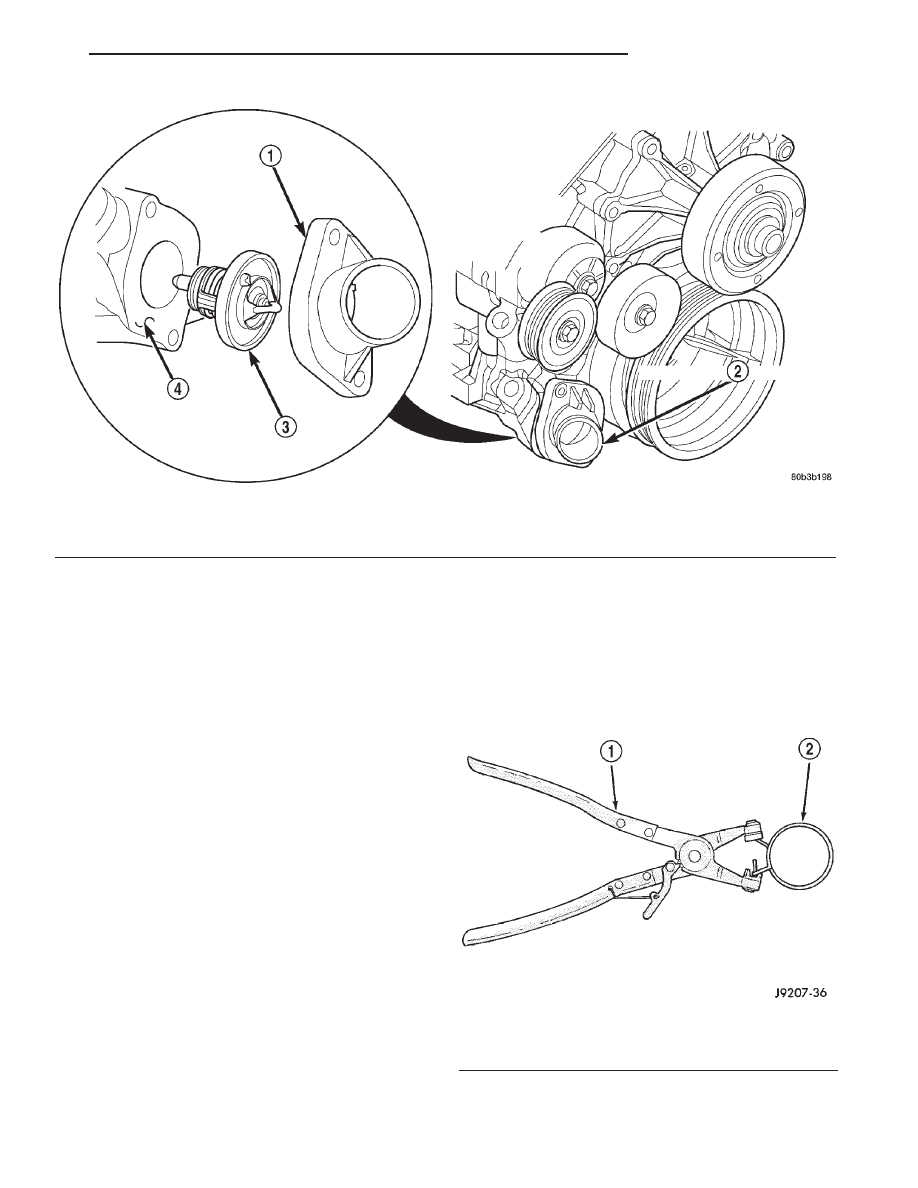Dodge Durango (DN). Manual - part 259

(5) Install lower radiator hose on thermostat hous-
ing.
(6) Install splash shield.
(7) Lower vehicle.
(8) Fill cooling system. Refer to Refilling Cooling
System in this section.
(9) Connect negative battery cable to battery.
(10) Start and warm the engine. Check for leaks.
RADIATOR
REMOVAL
WARNING: DO NOT REMOVE CYLINDER BLOCK
DRAIN PLUGS OR LOOSEN RADIATOR DRAIN-
COCK WITH SYSTEM HOT AND UNDER PRESSURE.
SERIOUS BURNS FROM COOLANT CAN OCCUR.
(1) Disconnect battery negative cable.
(2) Drain cooling system. Refer to Draining and
Filling Cooling System in this section.
WARNING: CONSTANT TENSION HOSE CLAMPS
ARE USED ON MOST COOLING SYSTEM HOSES.
WHEN REMOVING OR INSTALLING, USE ONLY
TOOLS DESIGNED FOR SERVICING THIS TYPE OF
CLAMP, SUCH AS SPECIAL CLAMP TOOL (NUMBER
6094) (Fig. 50). SNAP-ON CLAMP TOOL (NUMBER
HPC-20) MAY BE USED FOR LARGER CLAMPS.
ALWAYS WEAR SAFETY GLASSES WHEN SERVIC-
ING CONSTANT TENSION CLAMPS.
CAUTION: A number or letter is stamped into the
tongue of constant tension clamps (Fig. 51). If
replacement is necessary, use only an original
equipment clamp with matching number or letter.
Fig. 49 Thermostat and Thermostat Housing 4.7L
1 – THERMOSTAT HOUSING
2 – THERMOSTAT LOCATION
3 – THERMOSTAT AND GASKET
4 – TIMING CHAIN COVER
Fig. 50 Hose Clamp Tool—Typical
1 – HOSE CLAMP TOOL 6094
2 – HOSE CLAMP
DN
COOLING SYSTEM
7 - 35
REMOVAL AND INSTALLATION (Continued)